Marketing > QUESTIONS & ANSWERS > Chapter 13—Online and Mobile Advertising. Answers All Correct (All)
Chapter 13—Online and Mobile Advertising. Answers All Correct
Document Content and Description Below
TRUE/FALSE 1. To become a sponsored link in search results online, advertisers must bid for and purchase keywords from search engine services. T PTS: 1 2. Consumers’ Internet usage conti... nues to grow at the expense of the traditional media. T PTS: 1 3. The Internet is quickly becoming the main element of IMC programs and receives the majority of an advertiser’s media budget, basically replacing conventional media. F PTS: 1 4. Integration and interactivity are key features of the Internet and of advertising in this medium. F PTS: 1 5. Individualization refers to the fact that advertisers can control the flow of information to individual consumers. F PTS: 1 6. The idea of reciprocity generally defines the nature of interactive media. T PTS: 1 7. Interactive advertising is defined as encompassing all media that enable the user (who no longer is a “receiver” in the traditional, passive model of communication) to control the amount or rate of information that she or he wishes to acquire from a commercial message. T PTS: 1 8. Google has a keyword advertising program called AdSearch. F PTS: 1 9. The largest form of online advertising is banner advertising, and it commands about 40 percent of all Internet advertising. F PTS: 1 10. The website for a brand is an invaluable advertising medium for conveying information about the brand, its character, and its promotional offerings. T PTS: 1 11. The major difference between websites and other alternative online ad formats is that users seek out websites in a goal-oriented fashion. T PTS: 1 12. Research on the “look” of Web pages suggests that complex Web pages are better liked than those with relatively simple backgrounds. F PTS: 1 13. Banner ads are the least common form of Internet advertising. F PTS: 1 14. Click-through rates (CTRs) to banner ads are very high, averaging more than 30 percent. F PTS: 1 15. One type of banner ad is called a skyscraper. T PTS: 1 16. Electronic files, called brownies, can track users’ online behavior. F PTS: 1 17. Google’s AdSense program enables advertisers to run ads on other websites. T PTS: 1 18. Pop-ups are ads that appear between (rather than within a page) two content Web pages. F PTS: 1 19. Interstitials are ads that appear in a separate window that materializes on the screen seemingly out of nowhere while a selected Web page is loading. F PTS: 1 20. With interstitials, users have to wait until the entire ad has been shown. T PTS: 1 21. Superstitials are short, animated ads that play over or on top of a Web page. T PTS: 1 22. Online video ads are also referred to as streaming video. T PTS: 1 23. Blogs represent a major advertising opportunity on the Internet. F PTS: 1 24. Podcasting is a visual version of blogging. F PTS: 1 25. E-mail is not nearly as effective as originally expected because many marketers have simply “spoiled the commons.” T PTS: 1 26. Opt-in e-mailing is the practice of marketers asking for and receiving consumers’ permission to send them messages on particular topics. T PTS: 1 27. Unsolicited e-mail messages are referred to as spam. T PTS: 1 28. Regulations against unsolicited e-mail (spam) are much more stringent in North America than in Europe. F PTS: 1 29. Phishing is a criminal activity. T PTS: 1 30. E-zines tend to focus on traditional issues, such as family and religion. F PTS: 1 31. Google AdSense is based on behavioral targeting online using cookies. F PTS: 1 32. A critical element of search engine advertising is that this form of advertising attempts to place messages in front of people precisely when their natural search efforts indicate they apparently are interested in buying a particular good or service. T PTS: 1 33. The problem with keyword-matching advertising is that advertisers cannot specify the country where ads are to be sponsored and particular local areas to where ads are to be targeted. F PTS: 1 34. Phishing occurs when a competitor or other party clicks on a sponsored link repeatedly in order to foul up advertising effectiveness. F PTS: 1 35. Advertising via behavioral targeting implies that only those consumers known to be interested in a topic would receive ads from a marketer. T PTS: 1 36. Electronic measurement of a sample of users is possibly the most valuable tool for assessing Internet usage activity. T PTS: 1 37. One general objective for assessing website advertising effectiveness is to assess the exposure value or popularity of a website or Internet ad. T PTS: 1 38. The CPM metric is a simple way to measure an Internet ad’s effectiveness. F PTS: 1 39. Search engine advertising is especially vulnerable to click fraud. T PTS: 1 40. Estimates of click-through rates to banner ads average 25 percent. F PTS: 1 MULTIPLE CHOICE 1. In recent years there have been increased efforts on the part of advertisers and their agencies to locate new media that are _____ than the established media. a. more geographically dispersed b. easier to buy, more efficient, and more conducive to audience segmentation c. less fractionalized and impersonal d. more relationship oriented e. less costly, less cluttered, and more effective E PTS: 1 2. _____ refers to the fact that the Internet user has control over the flow of information. a. Individualization b. Interactivity c. Interruption d. Integration e. Internalization A PTS: 1 3. Interactivity, which is intertwined with _____, allows for users to select the information they perceive relevant and for brand managers to build relationships with customers via two-way communication. a. individualization b. internalization c. interruption d. integration e. intrusion A PTS: 1 4. Which of the following terms refers to a method of placing online advertisements on Web pages that show results from search engine queries? a. search engine optimization b. social media optimization c. social advertising d. search engine advertising e. banner advertising D PTS: 1 5. _____ advertising enables the user to control the amount or rate of information that he or she wishes to acquire from a commercial message. a. Interactive b. Multi-media c. CD-ROM d. Video e. DVD A PTS: 1 6. Online advertising formats include all of the following except _____. a. email advertising b. search engine advertising c. online reviews d. rich media advertising e. None of these are correct. C PTS: 1 7. Search engine advertising relies heavily on understanding consumer searches by _____. a. keywords b. price point c. cookies d. index e. Facebook A PTS: 1 8. Which of the following is an Internet advertising format? a. web sites b. search engine advertising c. superstitials d. e-mail advertising e. All of these are correct. E PTS: 1 9. Which of the following is NOT an Internet advertising format? a. banner ads b. websites c. telephony d. search engine advertising e. superstitials C PTS: 1 10. A(n) _____ is an invaluable advertising medium for conveying much information about the brand, its character, and its promotional offerings. a. pop-up ad b. banner ad c. CGI ad d. website e. interstitial D PTS: 1 11. Websites are different from other online ad formats because users seek out websites in a(n) _____ fashion. a. goal-oriented b. leaning backward c. haphazard d. multi-dimensional e. interactive A PTS: 1 12. The most popular form of Internet advertising is _____. a. sponsorships b. pop-ups c. superstitials d. banner ads e. interstitials D PTS: 1 13. _____ ads are typically small, static ads placed in frequently visited websites. a. Banner b. Pop-Up c. Interstitial d. Superstitial e. CGI A PTS: 1 14. Carla was on a web site to see what the weather was going to be during her vacation to Orlando. She noticed there were small, static ads placed for hotels, restaurants, and rental cars in the weather site she was consulting. Which type of ads are these? a. pop-ups b. banner ads c. interstitial ads d. superstitial ads e. blogs B PTS: 1 15. Research has found that click-through rates (CTRs) are a function of _____. a. interactivity b. brand familiarity c. price d. the amount of information e. the color in the ad B PTS: 1 16. Banner advertising, along with other communications elements in an IMC program, can serve to facilitate increasing levels of brand _____ and thus enhance brand _____. a. information; knowledge b. credibility; information c. focus; attention d. awareness; equity e. relative advantage; awareness D PTS: 1 17. Search engine advertisers using Google bid on keywords using Google’s _____ program. a. AdWords b. AdSense c. AdSearch d. contextual e. click A PTS: 1 18. Which of the following is a type of Internet marketing unit (IMU) endorsed by the Internet Advertising Bureau (IAB)? a. full banner b. skyscraper c. rectangle d. square pop-up e. All of these are correct. E PTS: 1 19. Online advertising formats that use motion, sights, and sounds are referred to as _____. a. banner ads b. third screen media c. CTRs d. rich media e. webblogs D PTS: 1 20. Which of the following types of Internet ads is NOT considered rich media? a. banner ads b. pop-ups c. interstitials d. superstitials e. video ads A PTS: 1 21. _____ are ads that appear in a separate window that materializes on the screen seemingly out of nowhere while a selected Web page is loading. a. Cookies b. Banner ads c. Pop-ups d. Interstitials e. Superstitials C PTS: 1 22. John was going to his favorite sports web ite when an ad for home equity loans appeared in a separate window that materialized on the screen seemingly out of nowhere. He wasn’t interested, so he closed the window. What type of Internet ad is this? a. website b. banner ad c. interstitial d. superstitial e. pop-up E PTS: 1 23. _____ are ads that appear between two content Web pages. a. Cookies b. Banner ads c. Pop-ups d. Interstitials e. Superstitials D PTS: 1 24. Barry was looking for golfers’ scores at the recent PGA championship on the PGA’s Web page when an animated ad for Calloway golf clubs appeared on top of the PGA’s Web page. What type of Internet advertisement is this? a. banner ad b. blog c. interstitial d. superstitial e. podcast D PTS: 1 25. One of the fastest growing forms of Internet advertising is _____ including so-called Webisodes. a. blogging b. banner ads c. video ads d. spamming e. superstitials C PTS: 1 26. Which type of Internet advertising format has the appeal of communicating directly with prospective customers, who in turn can become active communicators through their own posted comments? a. banner ads b. pop-ups c. blogs d. superstitials e. podcasts C PTS: 1 27. Why is it doubtful that blogs represent a major advertising opportunity? a. The blogosphere is regulated by the Federal Trade Commission and currently does not allow commercial advertisers to participate. b. The blogosphere is regulated by the Federal Communications Commission and currently does not allow commercial advertisers to participate. c. It is too expensive. d. Advertising is often perceived as less than fully objective and is seen by many as an intrusion. e. Not enough consumers participate in blogging to make it economical for advertisers. D PTS: 1 28. _____ is a way of publishing sound files to the Internet, allowing users to subscribe to a feed and receive new audio files automatically. a. Podcasting b. Blogging c. Superstitials d. Opt-in e. Broadcasting A PTS: 1 29. Procter & Gamble has created a website called “The People’s Choice” that focuses on entertainment and allows consumers to share their views on matters such as reality TV programs, entertainers, musicians, etc. This is an example of a _____ site. a. customized product b. social networking c. sales promotion d. product placement e. video advertising B PTS: 1 30. Which of the following is a way a blog can be used for advertising? a. Brand marketers can assess blogs for research b. Brand marketers can develop their own blogs c. Brand marketers can get ideas from competing blogs d. Blogs cannot be used for advertising e. Only video blogs can be used for advertising B PTS: 1 31. The word _____ is used in reference to unsolicited and unwanted commercial e-mail messages. a. spit b. salami c. bile d. trash e. spam E PTS: 1 32. Rebecca has been receiving a large amount of unwanted e-mail from a company that sells furniture online, alerting her to special deals and new products. This is a case of _____ e-mailing. a. informative b. opt-in c. spam d. misguided e. misrouted C PTS: 1 33. _____ is the practice of marketers asking for and receiving consumers’ permission to send them messages on particular topics. a. Spam b. Opt-in e-mailing c. Interstitial e-mailing d. Phishing e. Superstitial e-mailing B PTS: 1 34. Anti-spam legislation under the rubric _____ has been passed in the United States. a. CAN-SPAM b. X-SPAM c. SPAMLEG d. NOSPAM e. WEB-SAFE A PTS: 1 35. _____ takes place when criminals send e-mail messages appearing to be from legitimate corporations and direct recipients to phony websites that are designed to look like companies’ actual websites with the intent to extract personal data from people such as their credit card and ATM numbers. a. Spamming b. Podcasting c. Skimming d. Phishing e. Browsing D PTS: 1 36. Teresa received an e-mail message telling her to click on the link in the message to update her account profile at her bank. She did so, was taken to a website that looked like her bank’s online banking website, and proceeded to enter all sorts of personal information such as her social security number, checking account number, and credit card numbers. However, this was not a legitimate site for her bank, but rather it was one designed to look like her bank site so thieves could obtain consumers’ personal information to steal their identities. Unfortunately for Teresa, $3,000 was stolen from her bank account, and several purchases were made on her credit cards. This activity is known as ____. a. skimming b. phishing c. browsing d. searching e. podcasting B PTS: 1 37. Sponsored e-mail that distributes free magazine-like publications is known as _____. a. e-pubs b. e-zines c. e-books d. blogs e. podcasts B PTS: 1 38. What is the value of podcasting for advertisers? a. targeted messages based on lifestyle characteristics b. high CPM costs c. high reach d. coverage e. search engine optimization A PTS: 1 39. Which of the following describes podcasting? a. television shows online b. audio version of blogging c. aggregated video files d. itunes e. None of these are correct. B PTS: 1 40. _____ allows users to send and receive text messages on their mobile phones of up to 160 characters in length. a. Hot spot technology b. Tex-Mex Technology c. Podcasting d. Short Message Technology (SMS) e. Blogging D PTS: 1 41. Now mobile phones are common audio-visual devices for receiving information, entertainment, and advertisements and are being dubbed as the _____. a. hot spot b. first screen c. second screen d. third screen e. next wave D PTS: 1 42. One issue with marketers sending advertising messages to cell phones is that _____. a. interference may cause noise in the communication process b. recipients may immediately delete the item and hold negative feelings toward the advertiser c. clutter is already a problem with this form of marketing communication d. this form of marketing communication results in wasted coverage e. the target audience for this form of marketing communication is too small to be cost effective B PTS: 1 43. Many who are skeptical of a successful future for mobile phone advertising nonetheless believe this advertising medium may have value for _____. a. packaged-goods manufacturers b. business-to-business marketers c. local retailers d. service firms e. clothing manufacturers C PTS: 1 44. Mobile phones are being called _____ because they are so common. a. brand in the hand b. third screen c. replacement technology d. minibooks e. smartphones B PTS: 1 45. Which form of advertising only targets those with a known interest in a product? a. contextual advertising b. content advertising c. search advertising d. behavioral targeted advertising e. cookie advertising D PTS: 1 46. Which is the leading search engine? a. Google b. Yahoo! c. Bing d. MSN e. YouTube A PTS: 1 47. Search engine advertising rests on the concept of _____, which are specific words and short phrases that describe the nature, attributes, and benefits of a marketer’s offering. a. keywords b. analogies c. natural words d. search words e. word-find A PTS: 1 48. The two forms of search engine advertising available to online advertisers are _____. a. wired and wireless b. keyword-matching and content-targeted c. primary and secondary d. Internet and intranet e. Internet and ethernet B PTS: 1 49. Google enables Internet advertisers to run ads on websites other than Google’s own site, which is known as _____. a. keyword-matching advertising b. hot-zoned advertising c. content-targeted advertising d. podcasting e. blogging C PTS: 1 50. Several years ago a widely circulated report appeared in various media about the weight-loss benefits of drinking at least 24 ounces of milk daily along with undertaking a regular exercise regimen. The trade association responsible for promoting milk could have taken advantage of this publicity by placing ads on various health-oriented websites and linking the ads to media reports describing milk’s weight-loss benefits. If they had done this they would have been using _____ advertising. a. keyword-matching b. generic c. secondary-market d. social-networking e. content-targeted E PTS: 1 51. _____ occurs when a competitor or other party clicks on a sponsored link repeatedly in order to foul up advertising effectiveness. a. Spamming b. Phishing c. Click fraud d. Behavioral targeting e. Keyword-matching C PTS: 1 52. When only those consumers known to be interested in a particular product or service receive an advertisement, _____ is being used. a. behavioral targeting b. demographic segmentation c. benefit targeting d. consumer-oriented marketing e. geographic segmentation A PTS: 1 53. _____ are electronic files that track users’ online behavior. a. Cookies b. Banner ads c. Pop-ups d. Interstitials e. Superstitials A PTS: 1 54. The “action” in CPA refers to determining _____. a. the number of users who actually click on an ad b. the number of users who actually visit a brand’s website c. the number of users who actually purchase the advertised brand d. a and b only e. a, b, and c E PTS: 1 55. _____ represent(s) the percentage of people who are exposed to an Internet-delivered ad that actually clicked their mouse on it. a. Click-through rates (CTR) b. Cost per thousand (CPM) c. Cost per action (CPA) d. Opportunity to see (OTS) e. Search engine assessment (SEA) A PTS: 1 ESSAY 1. Compare and contrast the concepts of individualization and interactivity. 2. Define the following terms: banner ads, pop-ups, interstitials, superstitials, and video ads. 3. Explain what a webblog is and why it is doubtful that blogs represent a major advertising opportunity. 4. Discuss the fundamentals of search engine advertising (SEA), and describe the two forms of search engine advertising available to online advertisers. [Show More]
Last updated: 1 year ago
Preview 1 out of 15 pages

Reviews( 0 )
Document information
Connected school, study & course
About the document
Uploaded On
Nov 06, 2019
Number of pages
15
Written in
Additional information
This document has been written for:
Uploaded
Nov 06, 2019
Downloads
0
Views
60


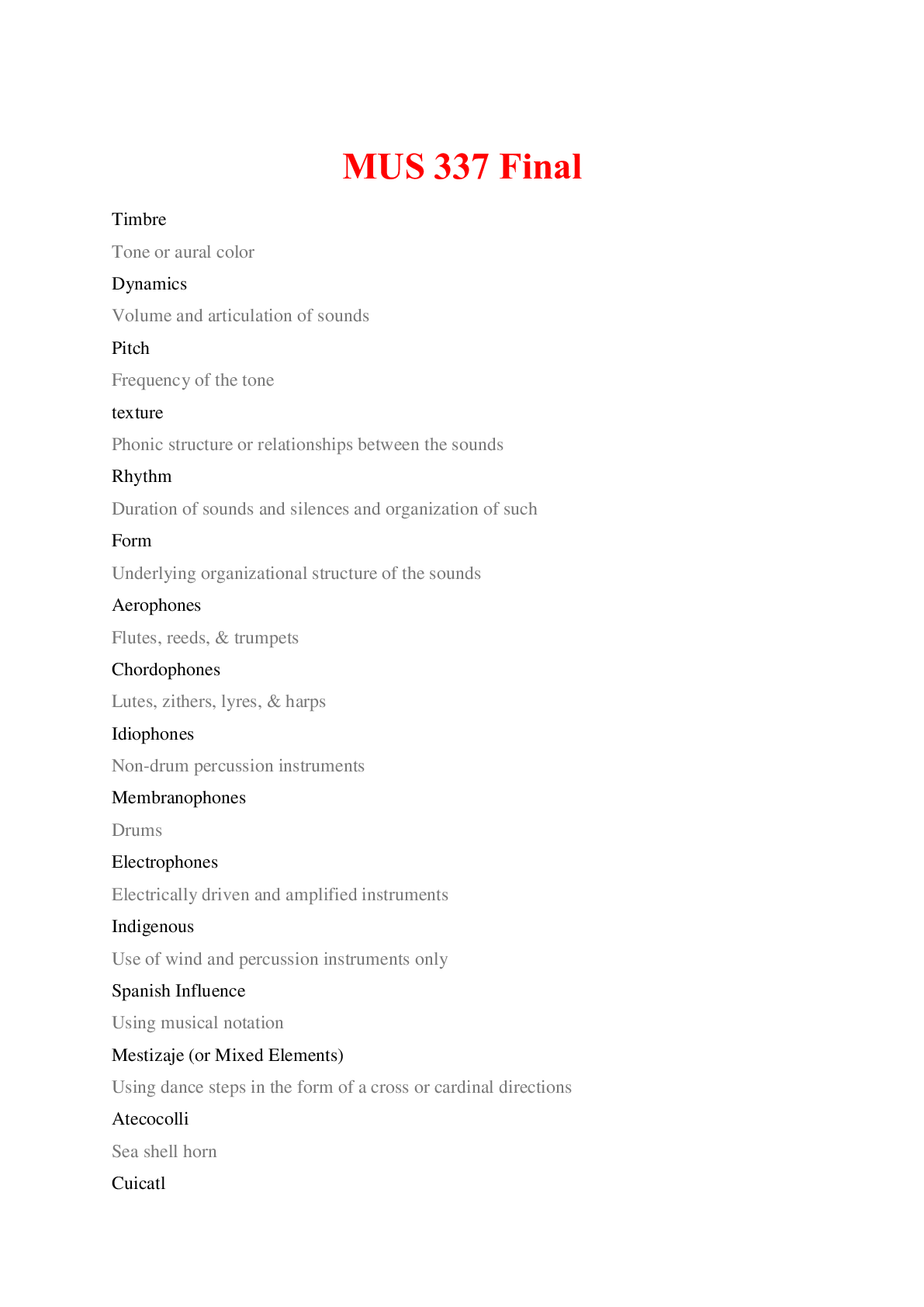







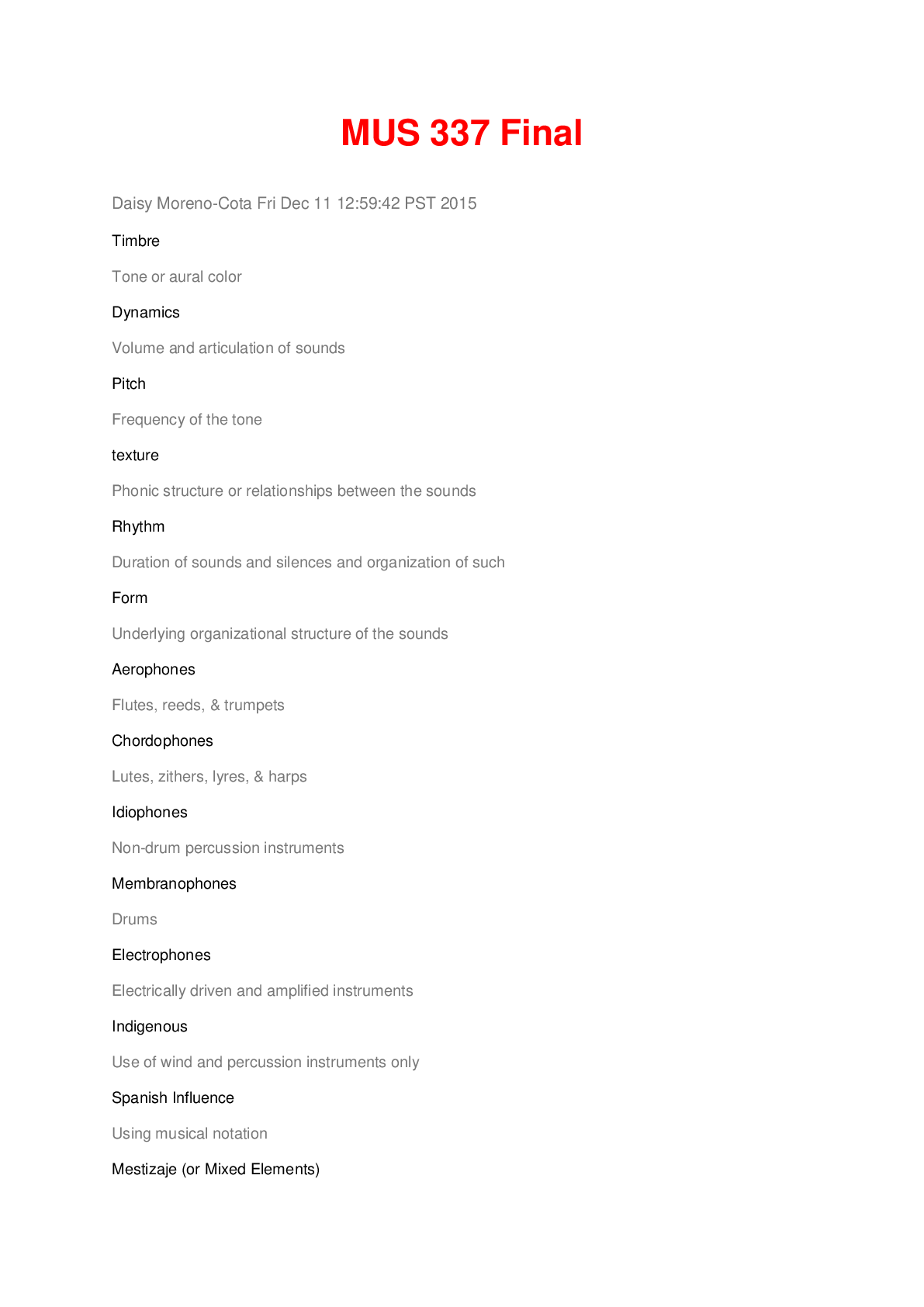




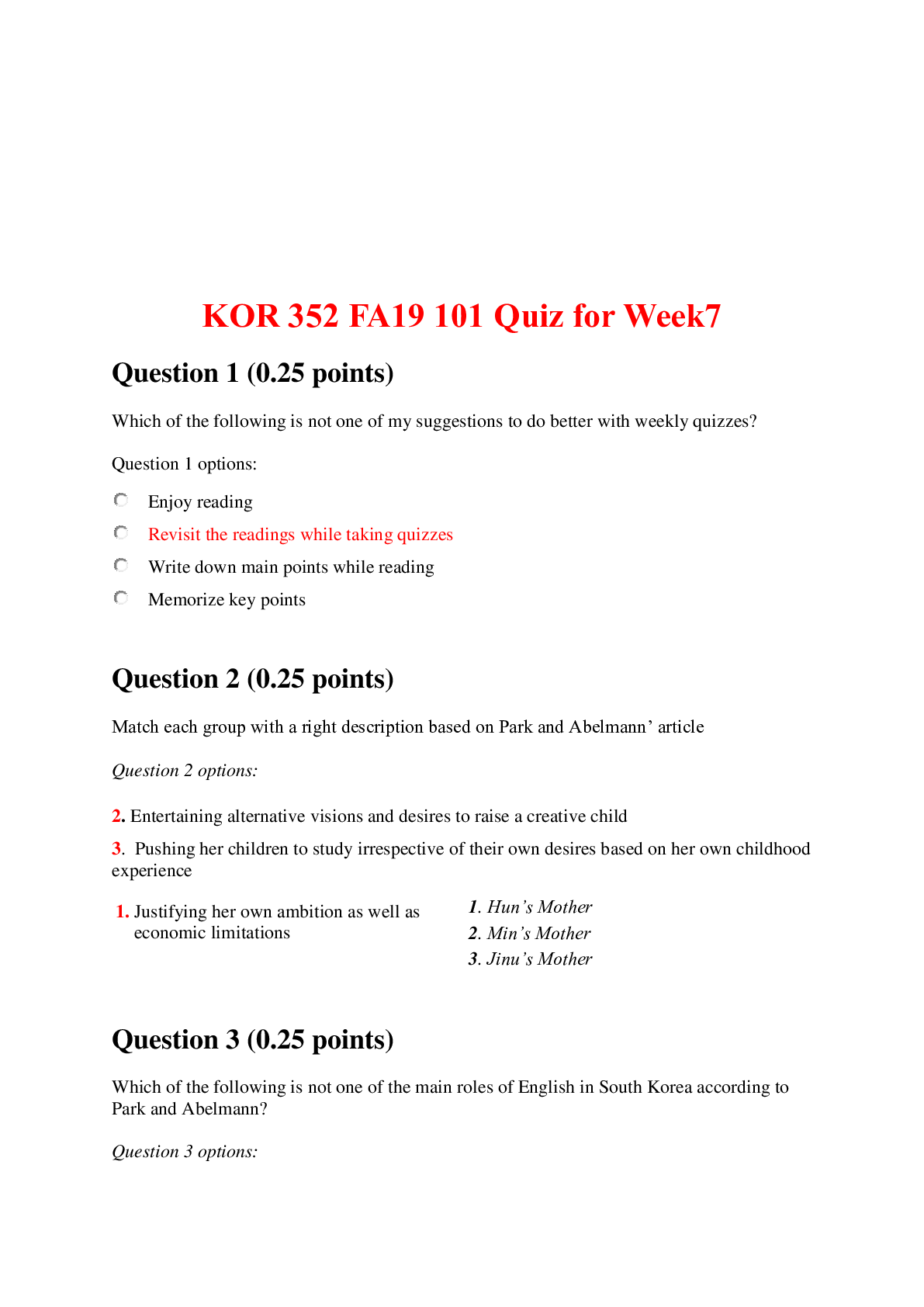

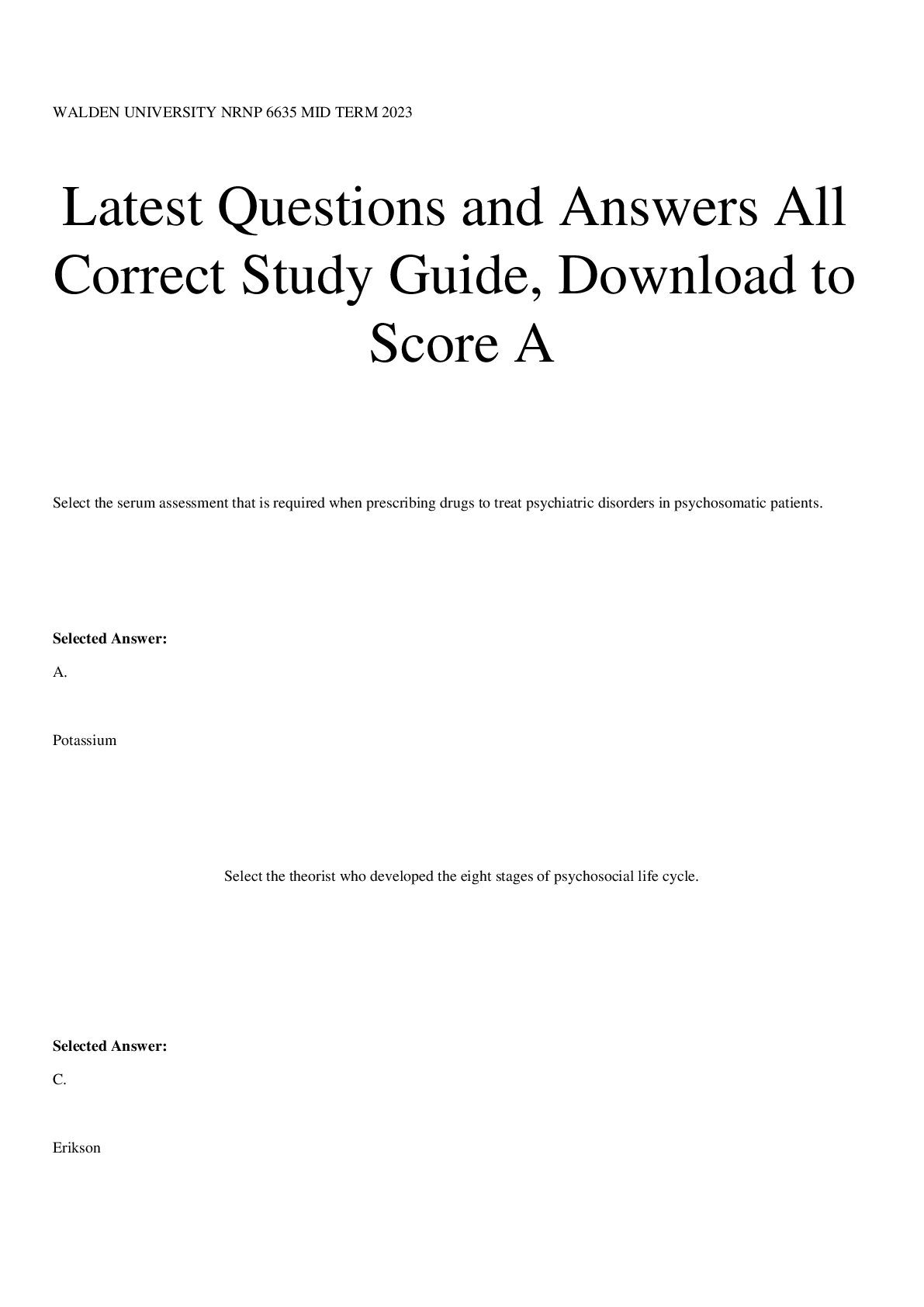

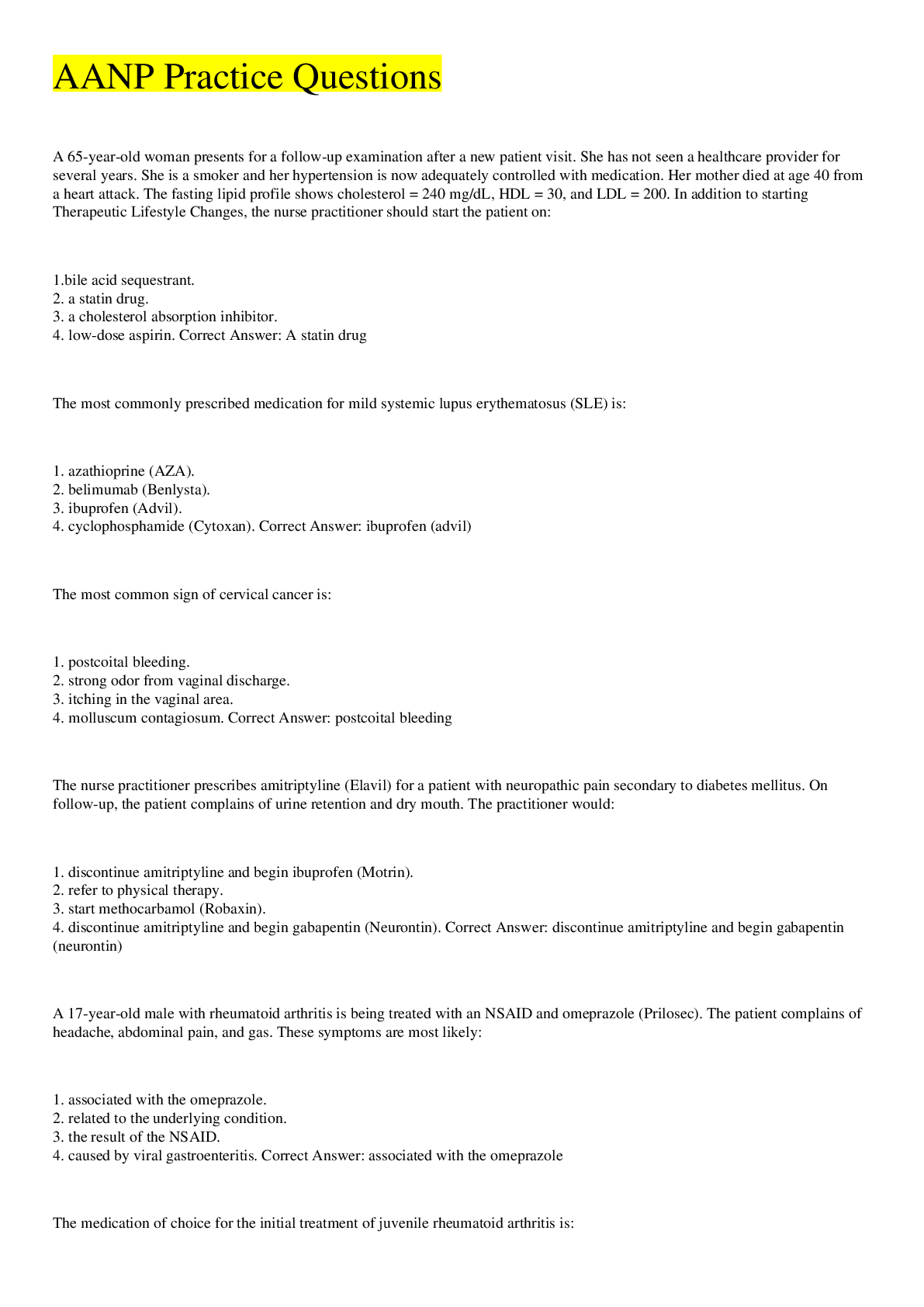
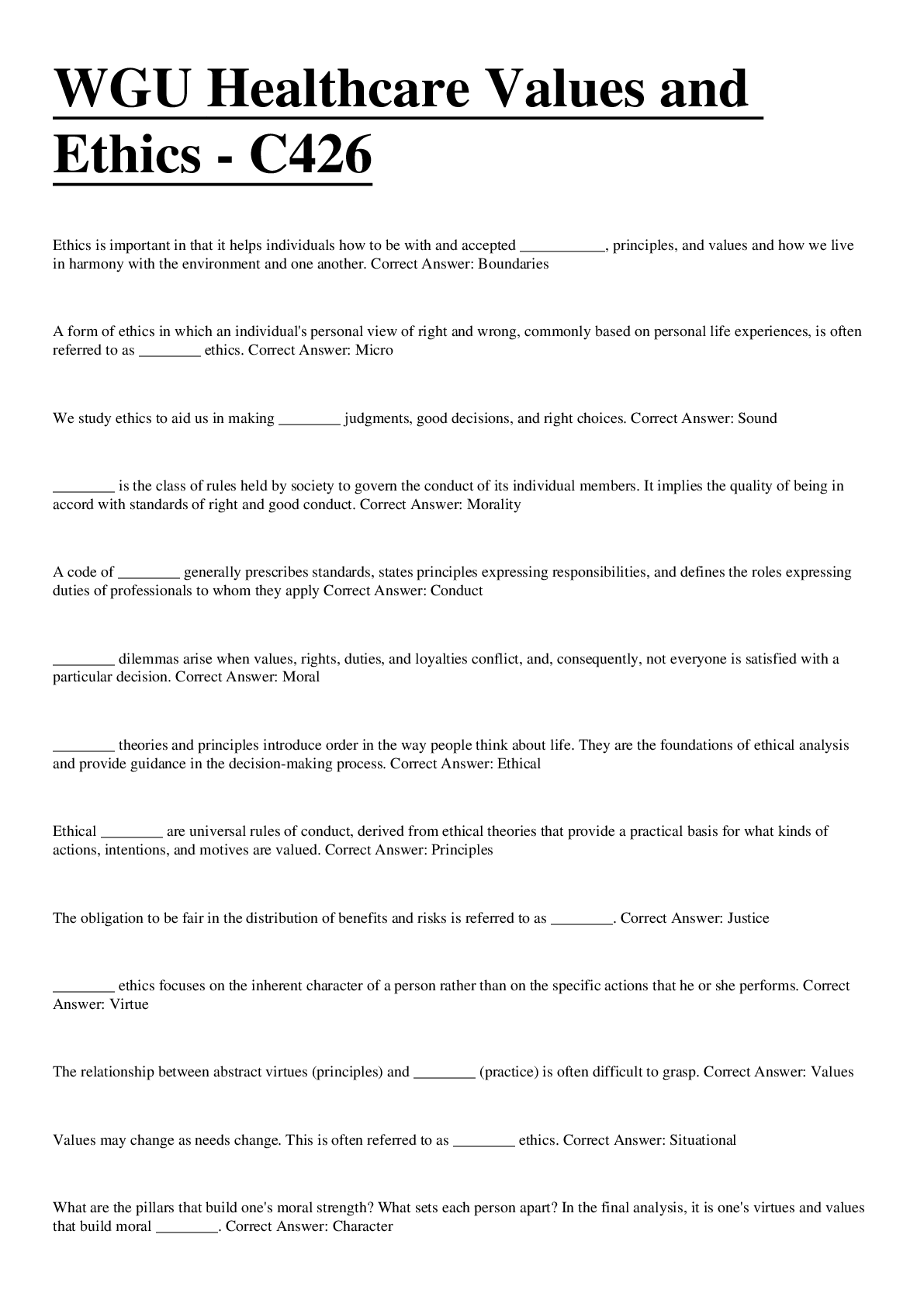
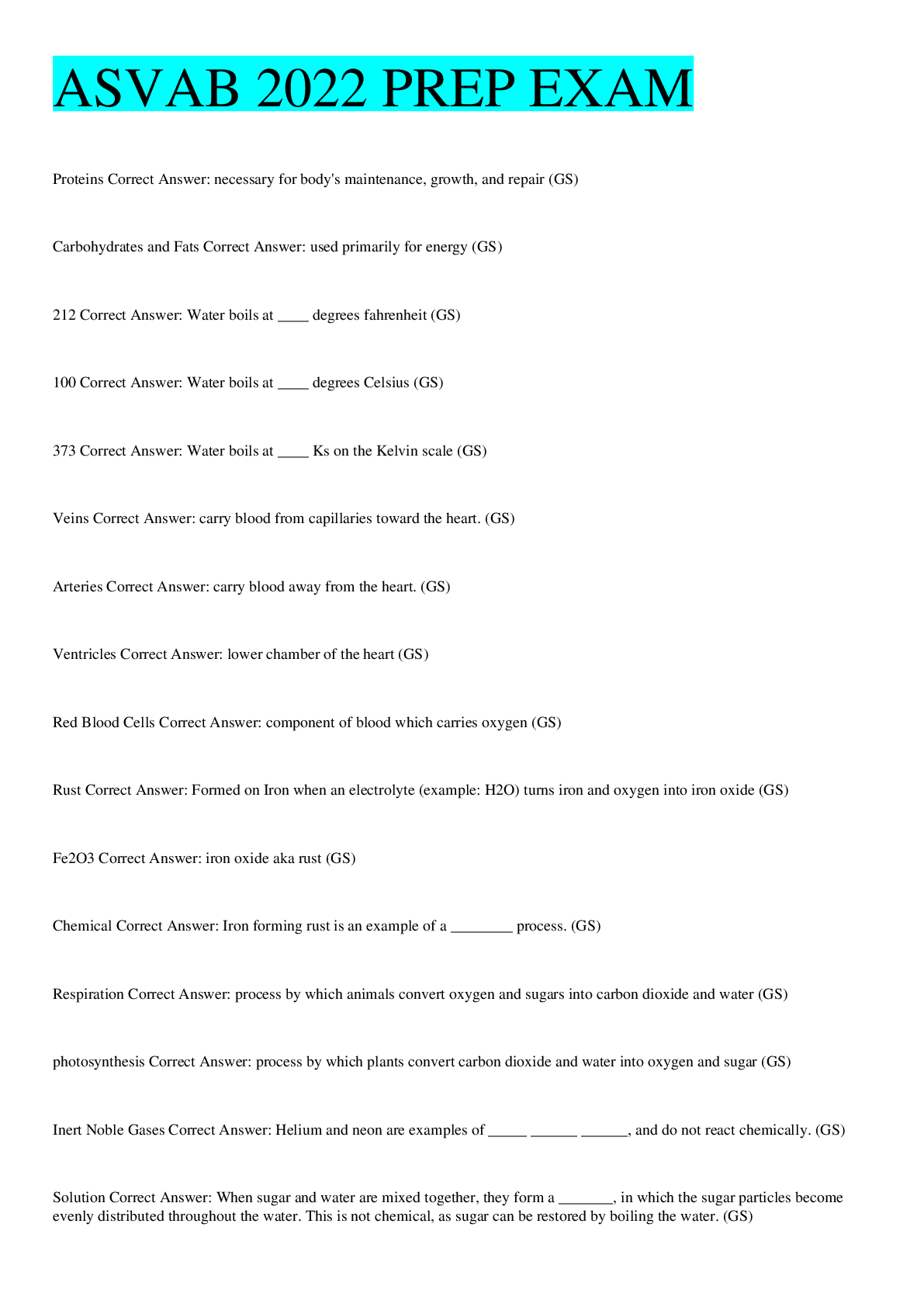
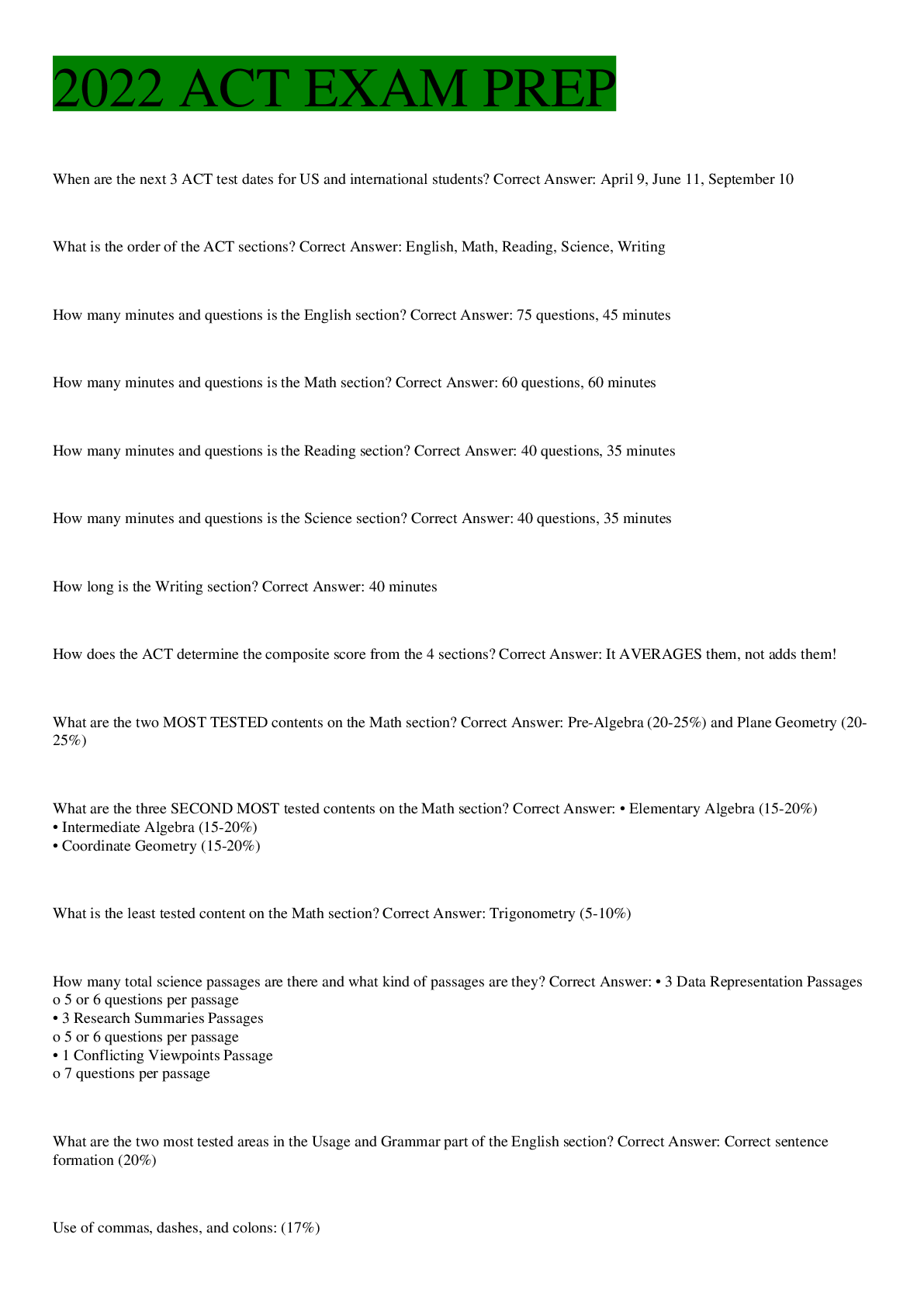
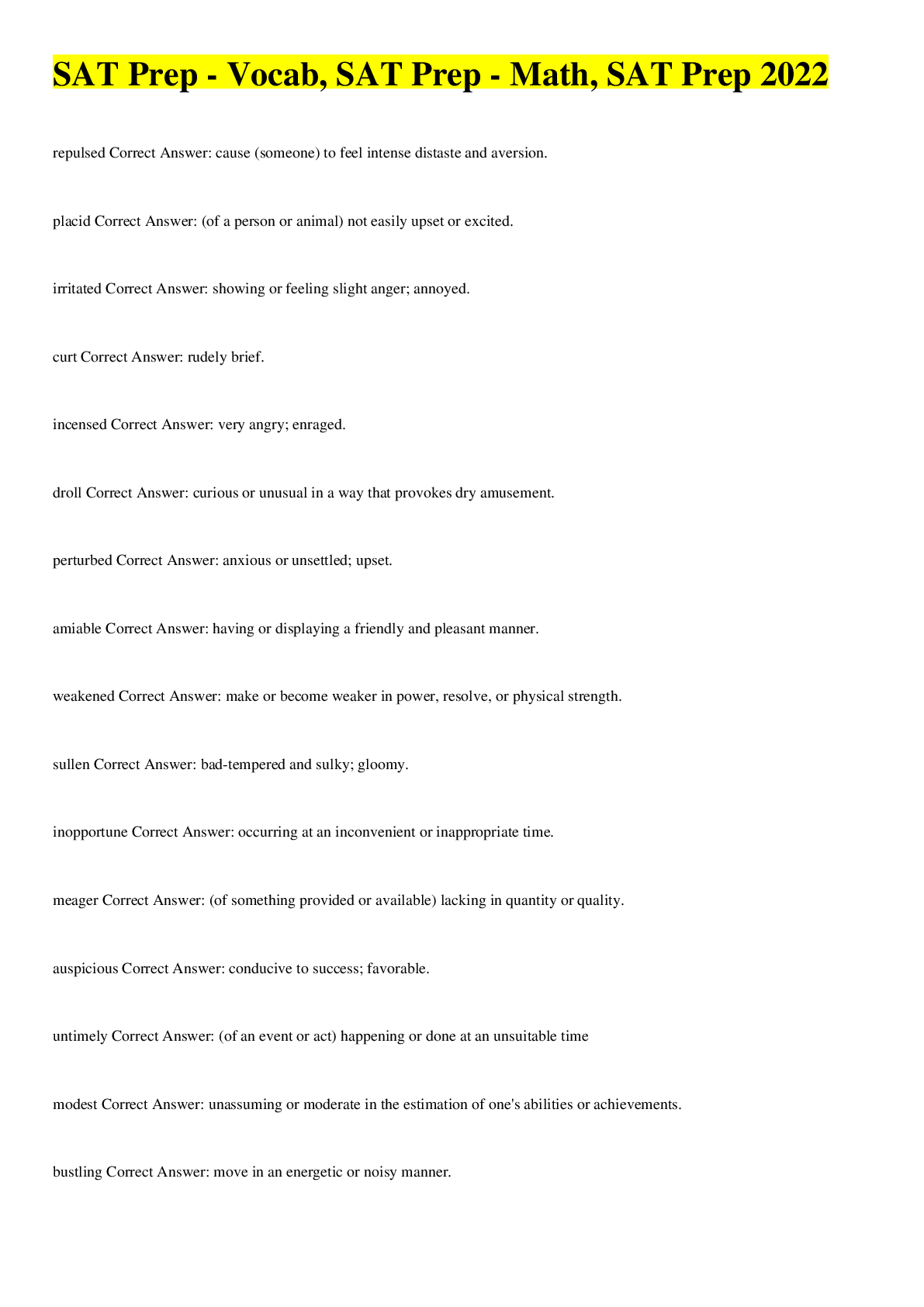
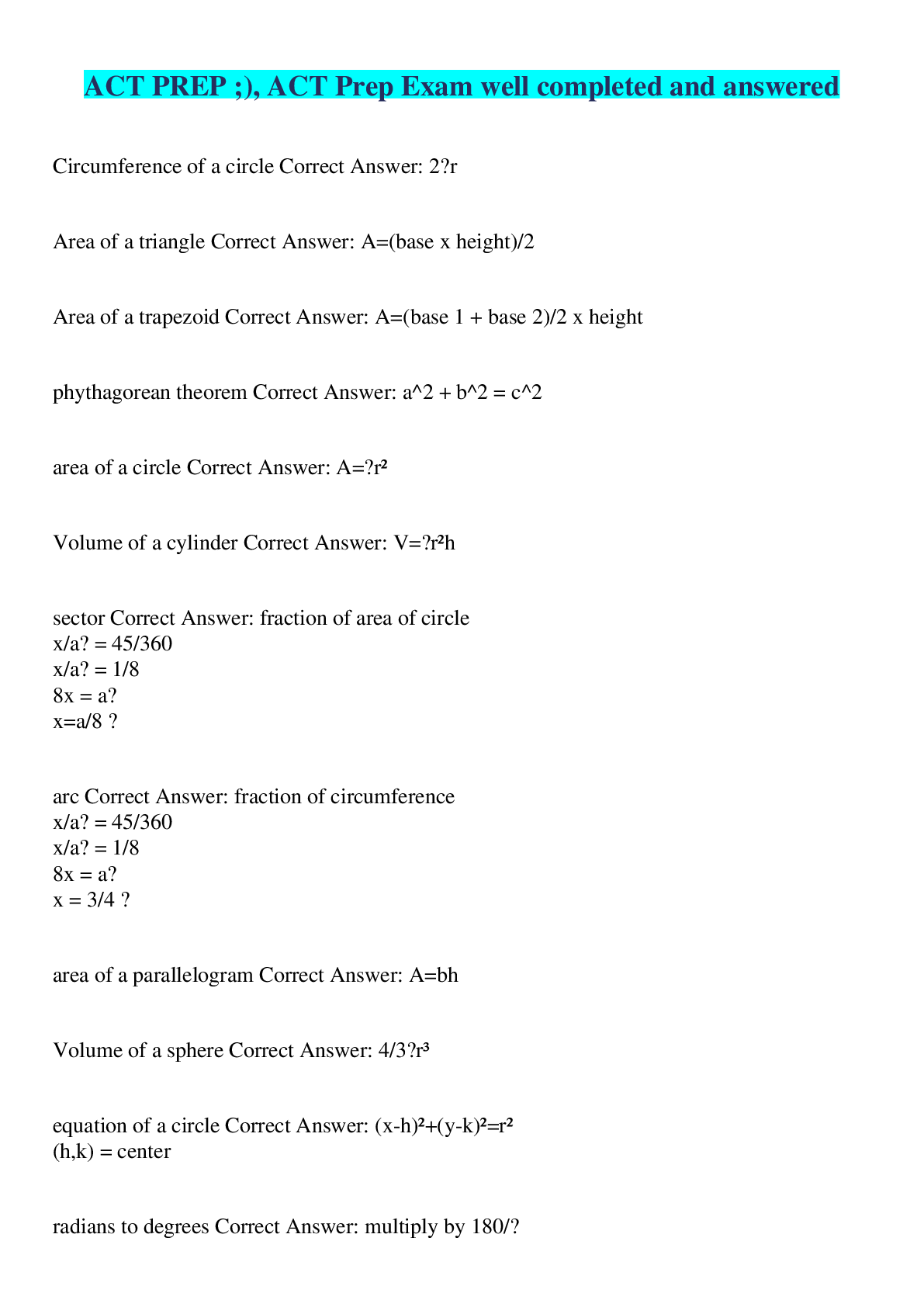
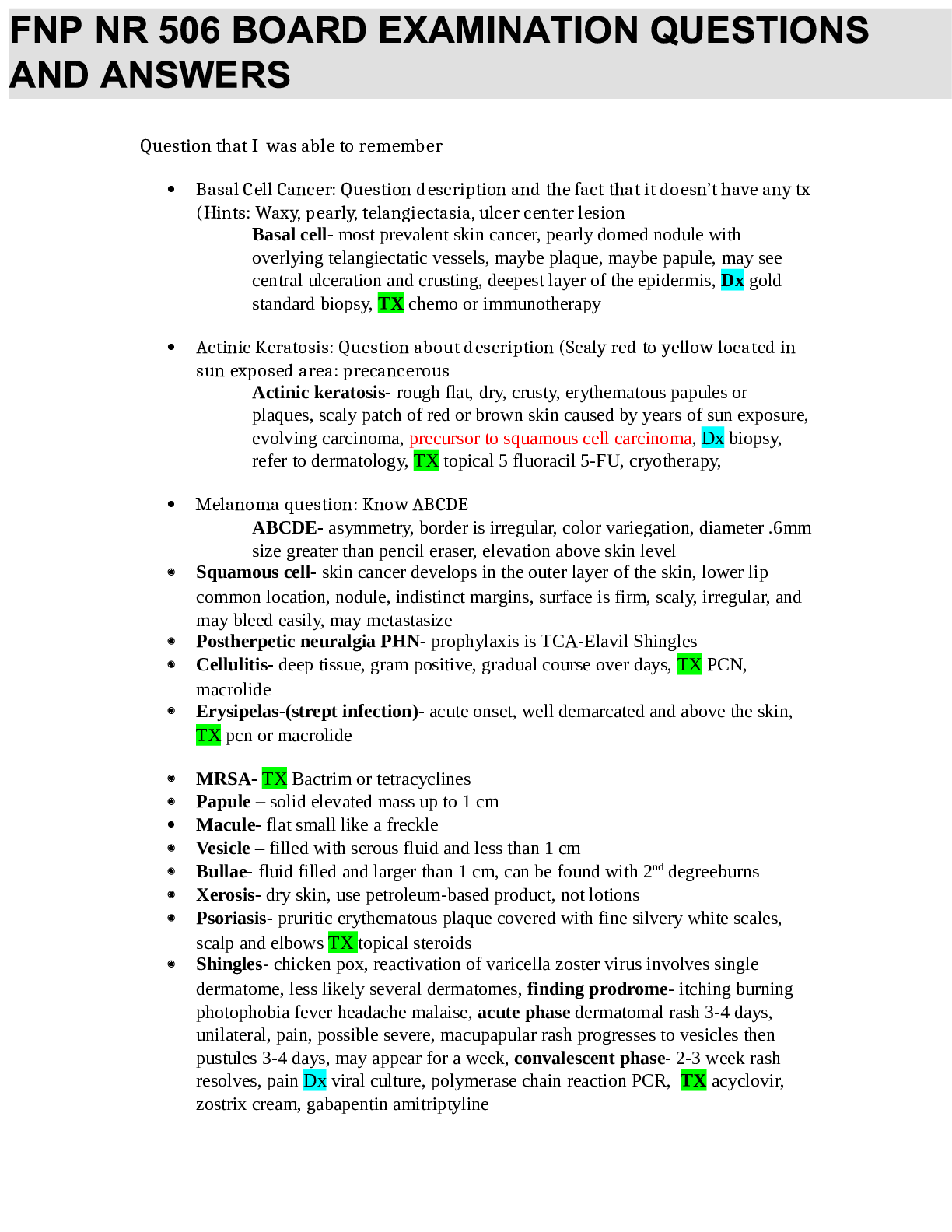



 Graded A.png)
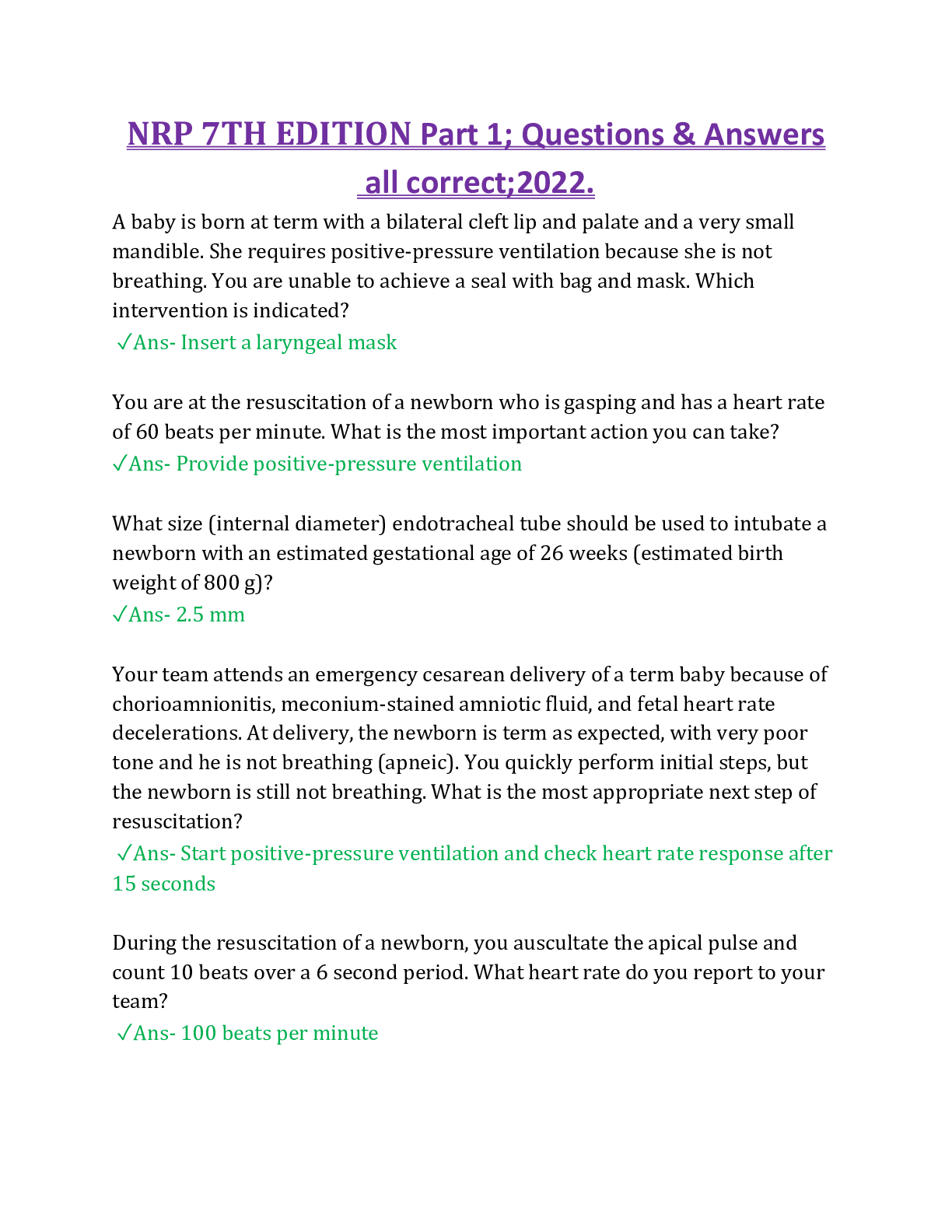

.png)



